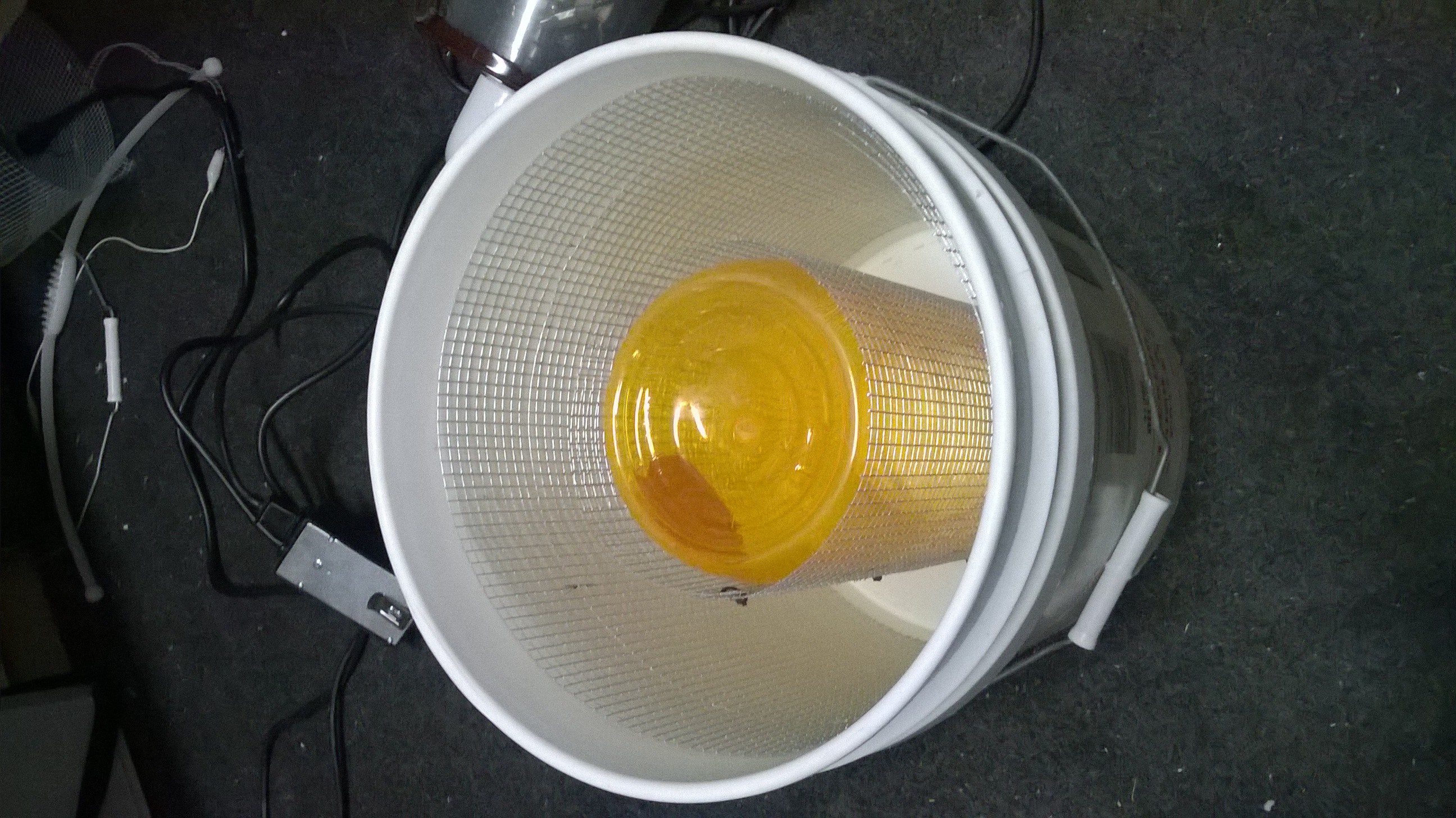The main problem with my last prototype is the high voltage circuit kept shorting out to the liquid below. It was time to fix this problem. I thought to remake the high voltage ionization portion of the device as a completely different stage. I thought to place this portion as a first stage, a pre-charger and then having the wet scrubbing liquid be charged to an opposite polarity. This would involve taking out the existing charge grids from the hollow walled tube in the wet scrubber and placing it in a completely different container and then having air run through that before it hits the wet scrubber.
First order of business was to take apart the old prototype's hollow walled tube. Luckily it didn't completely shatter even though some joints were solvent bonded. I managed to dismantle it, take the charge grid out, and glue it back together with only minor repairs and cracks.

Next was to build the pre charger ionization stage. In order to have the high voltage completely isolated from the wet scrubbing water, I had to use a different container. I was thinking initially to have it as a concentric container either inside or surrounding the 5 gallon bucket that contained the wet scrubber but I did not have such container on hand. Instead I used another 5 gallon bucket and placed the charge grids inside and then simply stack both 5 gallon buckets, ionization and wet scrubber as a one-two stage.
The construction of the ionizer was as follows, a cylindrical metal grid was placed just inside the 5 gallon bucket hugging the wall. An inner cylindrical container is placed in the center of the bucket and contained another cylindrical metal charge grid that hugs the inner container wall. This forms two concentric cylindrical charge grids. The outer grid would be charged to a high voltage and the inner grid would be grounded. Air would enter from the outside of the bucket in an inward spiraling fashion between the outer and inner charge grids thereby charging/ionizing the air. The air would then spiral inward into the inner container and finally exit the bucket and into the next stage (the wet scrubber that has an opposite charge).



I hooked up the charge grids to the high voltage source as a test. It made a very loud and satisfying hiss. What I noticed afterwards was made me stop in my tracks however. Stooping my head over the bucket I had a huge waft of Ozone smell. It dawned on me that this device could produce large amounts of Ozone! This is bad --unacceptable!! If this device produced Ozone, it would actually degrade the air quality not improve it. This left me a little discouraged and left me to go back to the drawing board for a bit.
Discussions
Become a Hackaday.io Member
Create an account to leave a comment. Already have an account? Log In.